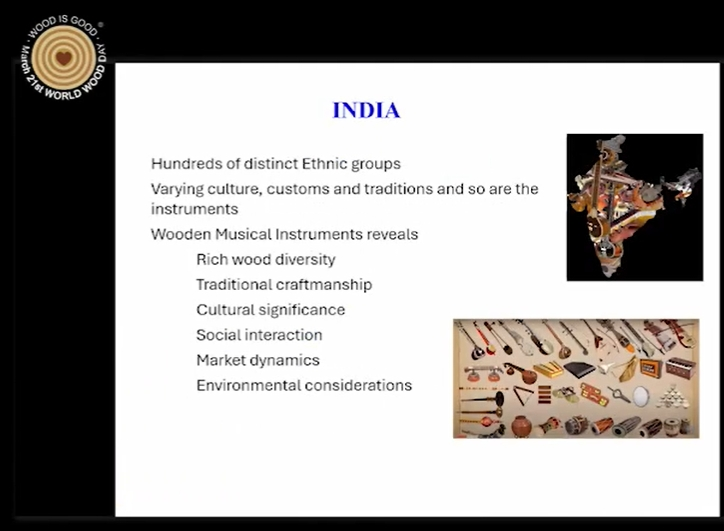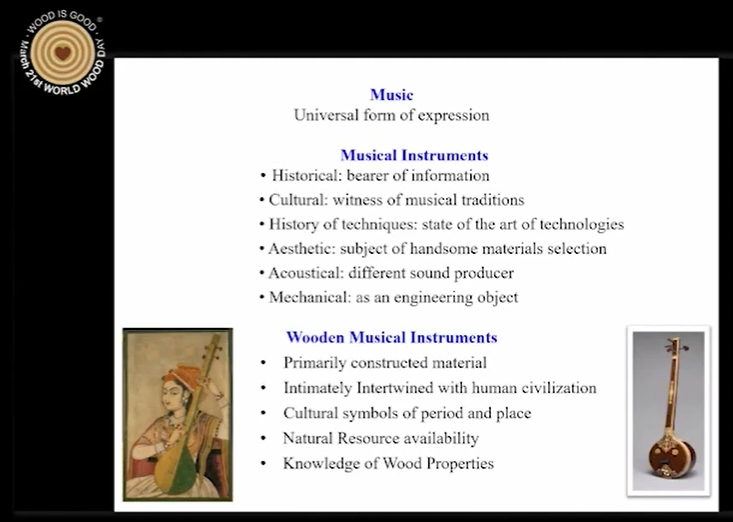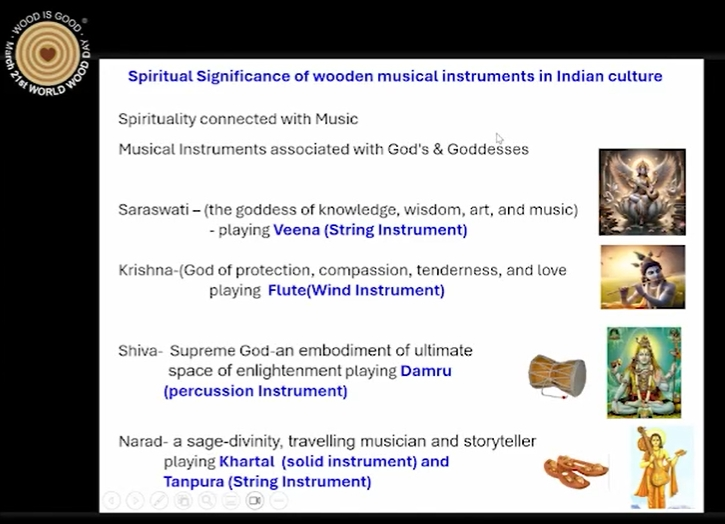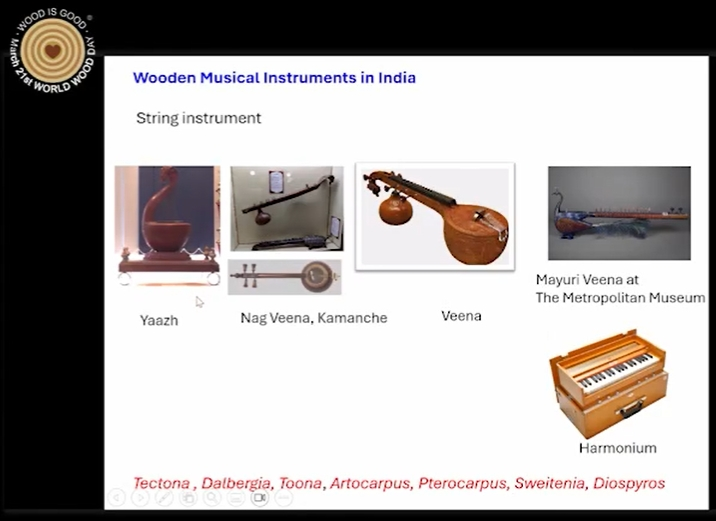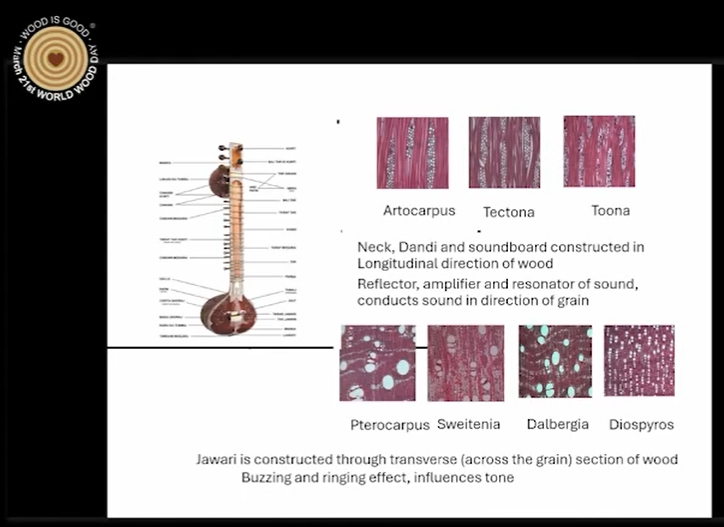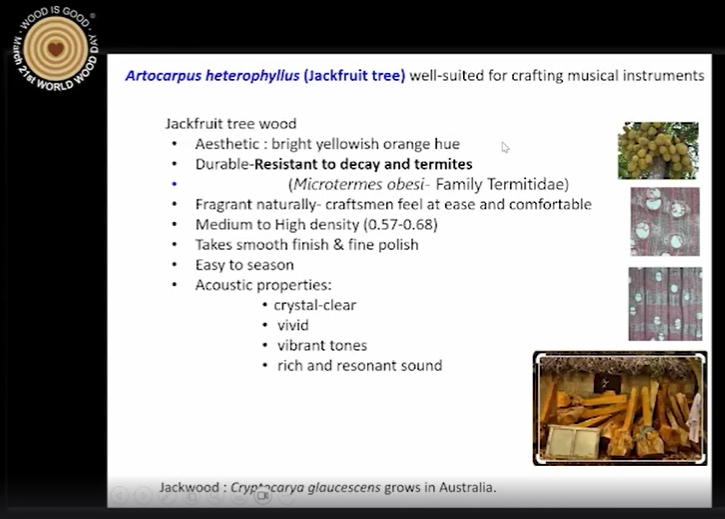会议名称:“2024世界木材日”研讨会暨第六届国际林联(IUFRO)林产品文化研究组讨论会
会议时间:2024年3月21-22日
报告嘉宾: Sangeeta Gupta
嘉宾介绍:印度德拉敦森林研究所木材解剖学科植物学部门前负责人
报告摘要:
Music has always been the fascination of early man. Musical instrument are tools of human expression that reveal historical, technological, social, and cultural aspects of times and people.
Wooden musical instruments have played a significant role in India's musical heritage across various eras. Throughout history, craftsmanship and playing techniques have been passed down through oral traditions and apprenticeships. India's musical landscape reflects a rich tapestry of traditional and contemporary instruments, each with its unique cultural and artistic significance.
In India, the combination of wood features is carefully considered by instrument makers to achieve a harmonious balance between durability, resonance, and tonal characteristics. The choice of wood is based on specific requirements of each instrument and the musical tradition it represents. Woods preferred are Artocarpus species (Jackwood), Santalum album (Sandalwood), Tectona grandis (Teak), Toona ciliata (Toon), Sweitenia species (Mahogany), Picea (Spruce), Acer species (maple), Dalbergia sissoo (Sheesham), Dalbergia latifolia (Rosewood), Pterocarpus dalbergioides (Padauk), Juglans regia (Walnut) and Bamboos. The choice of wood also reflects regional preferences and the availability of species.
The features/anatomy of wood directly impact its acoustic properties, which are vital for achieving the desired sound quality in instruments. Features considered are density, hardness, grain orientation, pore structure, dimensional stability, and durability.
In today’s scenario, sourcing the preferred material is a challenge, therefore instrument makers are exploring alternatives, prioritizing responsible sourcing, and adapting their craft to ensure that the instrument produced maintain desired qualities.
责任编辑:iwcs25H


 1,297
1,297
